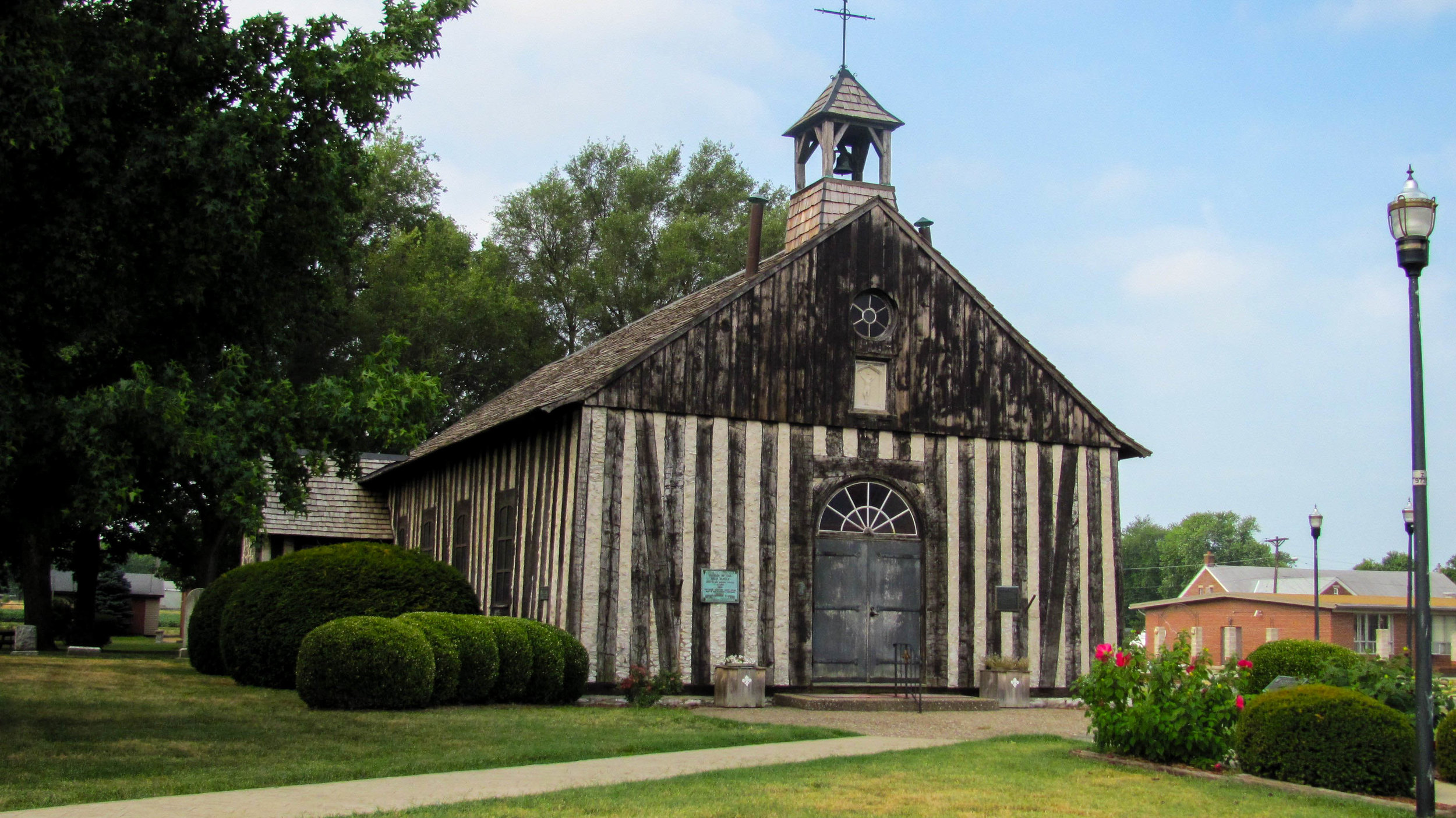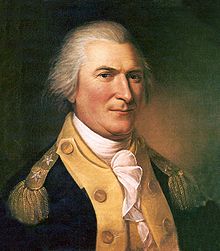Visitors Guide to St. Clair County, Illinois
Holy Family Log Church in Cahokia
In 1790 Arthur St. Clair was one of the more famous names in the new nation of the United States. St. Clair was born in Caithness County, Scotland in 1734 and he studied medicine at the University of Edinburgh. In 1757, St. Clair changed his career plans and joined the British Army as an ensign, and spent five years in Canada during the French and Indian War before resigning his commission and moving to western Pennsylvania. When the American Revolution began, St. Clair joined the militia and served as a brigadier general with General George Washington in the 1776-77 American Revolution battles of Trenton and Princeton. After the war St. Clair served in the Continental Congress and in 1788, St. Clair stepped down from his position as President of the Continental Congress to become the Governor of the Northwest Territory. St. Clair would serve for fifteen years as the chief executive of an area that includes the states of Ohio, Indiana, Illinois, Michigan, Wisconsin and eastern Minnesota until President Thomas Jefferson removed him for his opposition to Ohio statehood in 1802. St. Clair died in Pennsylvania on August 31, 1818.
On April 27, 1790, before 500 people assembled on the parade grounds of Cahokia, a proclamation issued by Governor Arthur St. Clair was read that would lay out the county that was to be the first in Illinois and would bear his name. The original boundaries of St. Clair County included about two-thirds of the State of Illinois. Cahokia was chosen as the seat of one of three judicial districts and would be the westernmost outpost of democracy of the new United States. In 1795 Governor St. Clair divided the county into two creating Randolph County to the south and Cahokia became the sole seat of St. Clair County. Parts of St. Clair County continued to be portioned off to make new counties until it reached its present size in 1818.
The Schmidt Art Center in Belleville
European settlement of St. Clair County dates back to 1699, with the founding of the village of Cahokia, the same year as the founding of Colonial Williamsburg in Virginia, by French-Canadian missionaries. By the 1740’s Cahokia became the center for the French trade in Native American goods and furs. On July 5, 1778 Captain Joseph Bowman who was part of George Rogers Clark and his “Long Knives” expedition to the Illinois Country captured Cahokia without resistance. During the winter of 1803-04 Lewis and Clark used Cahokia as an administrative center as the prepared for their journey into the west.
After the Revolutionary War there came an increase in the number of settlers from America, in particular veterans taking advantage of the one hundred acre land grants they received for their service in the war. These immigrants chose to settle, not in the bottomlands near Cahokia, but on the high ground inland from the Mississippi River. By 1814 these Americans wanted a more centrally located seat of government and the county seat was moved to Belleville. A second wave of immigrants, mostly of German descent, began in the 1830s and together with the American settlers caused St. Clair County to outgrow its French roots.
St. Clair County is named after Arthur St. Clair, a Revolutionary War General.
St. Clair County and in particular Belleville prospered due to an abundance of agricultural products. An abundance of another resource, bituminous coal, caused a number of industries to flourish. Visitors to the Belleville Labor and Industry Museum will learn about a variety of these industries including industries that manufactured bricks, glass, carriages, caskets, monument works, farm machinery, cigars, shirt and pants, and shoe. Belleville was once had so many stove foundries that it was called the "Stove Capital of the World."
Visitors to the Great River Road region of St. Clair County will find a variety of historical and entertaining things to do. A trip to the Colonial Cahokia State Historic Sites complex will reveal how the county’s early French roots. St. Peter’s Cathedral in Belleville is the largest cathedral in the state of Illinois and is modeled after the Cathedral of Exeter, England and its English Gothic style of architecture. Also in Belleville is the recently opened William & Florence Schmidt Art Center. greatriverroad.com invites to visit this interesting and vibrant region.













